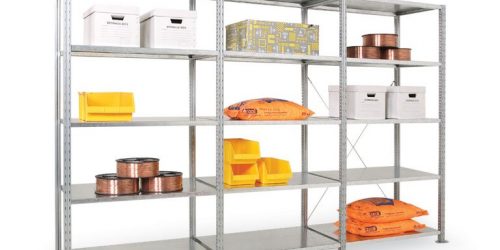How can the workspace be a lever for productivity and quality of life at work?
Working remotely or in person? In both locations, the main challenge is to make sure that employees work in the best possible conditions. Whether it is physical or virtual, the workspace is a crucial factor in well-being and quality of working life (QWL), but also in productivity. Providing all employees with a comfortable, inspiring, and friendly environment that is conducive for both exchange and concentration, while also ensuring the health and safety of everyone is undoubtedly the main challenge workspaces are faced with.
Evolving workspaces
Flexible office, home office, remote working, coworking – all these new terms reflect the changes that have been transforming workplaces over the last few years. They all aim for greater efficiency, in line with the new ways of working, focusing on the search for meaning and a better work-life balance.
Well-being at work is a source of both individual fulfillment and collective success for businesses that are becoming increasingly aware of the benefits associated with setting up a comfortable and functional workspace that encourages creativity and concentration. This new reality applies not only to office spaces but also to warehouses.
Strengthening conviviality
The development of the flex office is marking the end of employees having a dedicated desk and a private office. Instead, it is transforming traditional office spaces into collaborative hubs, more conducive to discussion, meeting, and consultation than to production. The challenge here is to make each meeting a rich and productive moment.
For flex offices, the key to success lies in the conviviality of workspaces. However, conviviality does not mean passivity. On the contrary, a well-designed flex office promotes teamwork, interaction, a sense of community, and active listening. Conviviality is the prerequisite to making it a place for creativity.
Encouraging autonomy
If the office is becoming primarily a place for exchange, other dedicated workspaces can be assigned to production. This is the advantage of remote working. When well-conducted and because it relies on the autonomy of employees, remote working greatly enhances their engagement.
Furthermore, by reducing fatigue and time wasted in transport, remote working also improves employee productivity.
Promoting collaboration
A workspace can be physical; it can also be virtual. With the rise of remote working and geographically dispersed teams, online collaborative tools have become indispensable for facilitating cooperation and communication between employees. These tools, such as project management platforms, instant messaging, or videoconferencing solutions, allow for real-time information sharing and effective team working, even from afar.
The majority of users also find that using these tools boosts their productivity. They strengthen trust and transparency among team members, thereby contributing, even remotely, to a better quality of working life (QWL).
Reducing noise disturbances in the workspace
Noise at work can lead to fatigue, stress, sleep disorders, and even high blood pressure. It also affects the quality of interpersonal relationships and the productivity of colleagues.
Installing acoustic partitions and furniture in office spaces or using hearing protection such as earplugs or noise-cancelling headphones, can help reduce distractions and improve team comfort and efficiency.
Tackling musculoskeletal disorders in the workspace
Musculoskeletal disorders (MSDs) pose a significant problem in the world of work, representing a large proportion of occupational diseases and generating substantial costs for both companies and the healthcare system. Adopting good posture can help prevent MSDs, which affect 60% of European workers[1], costing employers 2 billion euros annually.
Whether at home or at the office, having an ergonomic workspace with ergonomic products, combined with an awareness of good postural practices, can help prevent the onset of such disorders and thus reduce their impact on productivity and quality of working life.
Choosing suitable furniture and equipment both for office spaces and meeting rooms (such as ergonomic chairs or computer screen supports) is necessary to ensure the long-term health and well-being of employees.
Improving air quality
Poor air quality can negatively impact the health and productivity of employees. It is therefore critical to monitor air quality within the company’s premises by ensuring proper ventilation and regularly maintaining air conditioning and heating systems.
If needed, air treatment solutions are also available.
At home, too, healthy air enhances team productivity. Remind your staff of the importance of regularly ventilating the room they are working from.
Favouring natural lighting
Natural lighting is a key factor for the quality of working life and productivity in a workspace. Employees exposed to natural light tend to be more alert, less stressed, and more satisfied with their work.
It is therefore advisable to favour natural light whenever possible, supplemented by tailored artificial lighting according to individual needs. Regardless of your workspace, try to make the most of natural light when possible.
When working from home, it is also crucial to pay attention to these factors to reach the best possible working conditions. Working in a well-lit room can enhance the quality of working life and productivity of remote employees.
Utilising the benefits of plants
Incorporating plants and greenery into workspaces offers multiple benefits:
- Lowering stress levels;
- Improving the health and productivity of employees;
- Helping to purify the air.
Plants also contribute to defining workspaces in a subtle, aesthetic way.
To learn more about these improvement levers, download our “Future of work” white paper.
[1] European Agency for Safety and Health at Work, Work-related musculoskeletal disorders: prevalence, costs and demographics in the EU, 2019





